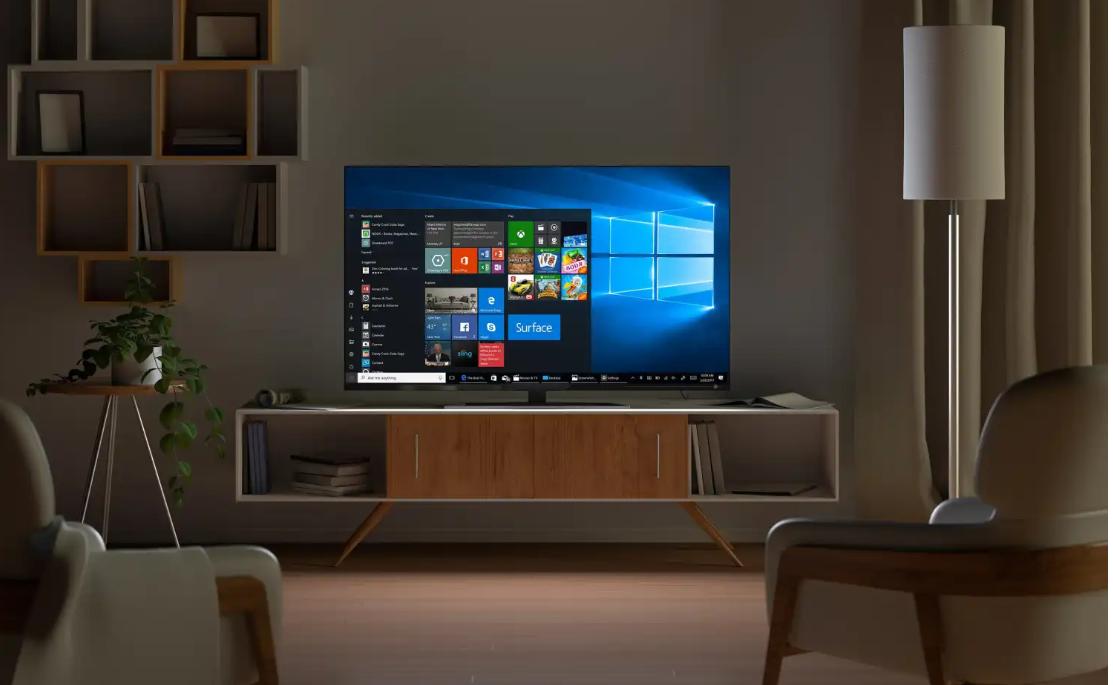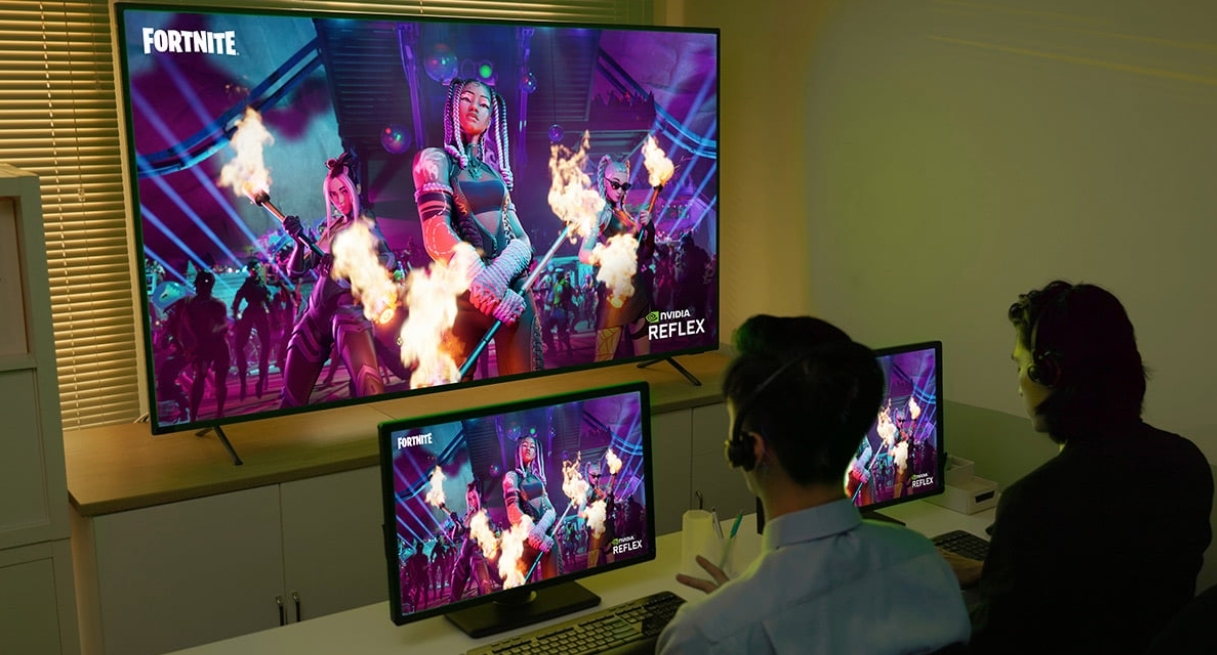
Can I Use My TV as a Computer Monitor?
On July 17,2025 by Tom RoutleyHooking up a computer to a TV opens up a world of possibilities. Whether you’re looking to stream movies on a bigger screen or simply need more display space for productivity tasks, using a TV as a monitor is a flexible option. This practice has become increasingly popular as TVs offer large screens and richer visuals compared to standard computer monitors. But is it the right choice for you? This guide will walk you through the setup process, along with pros and cons, to help you decide if using a TV as a computer monitor meets your needs.

Why Consider Using a TV as a Computer Monitor?
Choosing to connect your TV as a monitor offers several benefits. For starters, TVs typically feature a larger screen size, ideal for those who love watching movies or working on design tasks. Additionally, many modern TVs come with 4K or UHD resolution, providing crisp and clear visual details comparable to traditional monitors. Large screens make split-screen multitasking smoother, crucial for productivity enthusiasts. However, keep in mind a couple of potential downsides, such as input lag and text clarity, which we’ll cover in more detail later on. Ultimately, your specific needs and the purpose of usage will determine if this setup is suitable.
Steps to Connect Your Computer to a TV
Check Your TV’s Ports and Resolution
First, examine the ports on your TV. Common connections include HDMI, DisplayPort, and VGA. Aim for an HDMI connection for the best quality and ease of use. Also, verify your TV’s resolution. Knowing if your TV supports 1080p, 4K, or other resolutions helps tailor the computer settings correctly. Your computer’s graphics card plays a role in this setup, as it needs to support the TV’s resolution. Notably, some older TVs may not support certain resolutions required by modern computing tasks, so checking this spec is crucial for achieving an optimal display.
Use the Right Cable
Picking the correct cable is crucial for a successful connection. Generally, HDMI cables are recommended due to their widespread compatibility and support for both video and audio. Ensure the cable you select matches the ports on both your TV and computer. For example, if your computer utilizes a DisplayPort, a DisplayPort to HDMI adapter may be necessary. Remember that cable quality can influence signal strength, so opting for a well-made cable can prevent future connectivity issues. Always prioritize a direct connection when possible for higher resolution and refresh rates.
Configure Display Settings on Your Computer
Once your computer and TV are connected, navigate to your computer’s display settings. On a Windows machine, you can do this by right-clicking on the desktop and selecting “Display settings.” Adjust the resolution to match your TV’s capability; for instance, if it’s a 4K TV, set the resolution to 3840x2160. Also, determine whether you want the TV to mirror your computer screen or extend it as a separate workspace. These settings can be vital for ensuring you get the experience you desire, especially if you plan to switch between different tasks frequently.
Adjust Scaling and Refresh Rate
Fine-tune your setup by addressing scaling and refresh rate concerns. Scaling ensures that content appears appropriately sized on your TV, which is especially important on larger screens to prevent text and icons from appearing blown up or pixelated. In Windows, you can set scaling options in the “Display settings” menu. Additionally, verify the refresh rate, adjusting it to the highest setting your TV supports for smoother motion. This step is key for reducing input lag and offers an overall better viewing experience, which is particularly beneficial when watching videos or playing games.
What Are the Pros and Cons of Using a TV as a Monitor?
Advantages: Bigger Screen, Media-Friendly
Using a TV as a monitor means enjoying a considerably larger screen, ideal for entertainment and productivity. With 4K TVs, users can benefit from superior picture quality, making movies, games, and even spreadsheets look stunning. Many TVs today have built-in smart functionality, providing seamless streaming options for media lovers directly through Netflix, YouTube, and other platforms. Moreover, the bigger display area supports multi-tasking; you can run multiple applications side-by-side efficiently, enhancing workflow and ensuring better productivity. In sum, TVs aren’t just for entertainment anymore, but powerful multi-purpose displays.

Disadvantages: Input Lag, Text Clarity, Eye Strain
Despite their benefits, TVs as computer monitors come with challenges. One of the primary concerns is input lag; TVs, unlike computer monitors, often process and display images more slowly, which can be an issue for gamers who require instant responses. Text clarity can also suffer since TVs are not primarily designed for displaying text, leading to potential discomfort when reading or writing extensively. Finally, larger screens can cause eye strain if viewed up close for extended periods. Sitting at the appropriate distance and using protective screen adjustments becomes imperative to mitigate these drawbacks effectively.
Conclusion
Connecting your computer to a TV as a monitor can be a rewarding experience, significantly enhancing your visual workspace with a larger screen and opening new entertainment possibilities. This method provides a viable alternative for those seeking bigger screens without investing in highly priced large monitors. However, the suitability depends on your needs, the features of your TV, and your intended use. Weighing the pros and cons helps decide whether this setup aligns with your goals. As technology and user needs evolve, opting for a TV as a monitor might become a more common and practical choice among users.
FAQ
Can Line TV Work for Gaming As a PC Monitor?
The Line TV can indeed serve as gaming monitors, provided they have low input lag and a high refresh rate, typically above 60Hz. However, the gaming experience may not be as optimal as on specialized gaming monitors due to potential input lag and different response time settings inherent in TVs. For a better gaming experience, ensure your TV is in ‘Game Mode,’ which minimizes lag through optimized settings. Evaluating these specifications beforehand can result in a much smoother gaming session.
Is There a Big Difference Between 4K TVs and Monitors?
Yes, significant differences exist between 4K TVs and monitors. While 4K TVs offer stunning displays for movies and larger pictures, 4K monitors are often more precise in color accuracy, essential for professional creative work. Monitors usually have higher refresh rates and quicker response times, beneficial for competitive gaming and fast-paced environments. The choice between the two depends largely on intended use, from multimedia to professional tasks, and personal preferences when it comes to image quality and responsiveness.
What Settings Should I Change on My TV for the Best Experience?
To ensure the best viewing experience, switch your TV to ‘PC Mode’ or ‘Game Mode’ where available. These modes help minimize input lag and optimize performance. Adjust the picture settings to align with your preferences; consider changing brightness, contrast, and sharpness to comfortable levels. It’s also beneficial to disable unnecessary TV processing features like “motion smoothing” as they may cause unwanted delays or alter intended resolutions. Frequent testing and adjustment make sure you enjoy the best content possible that fits your needs and remains visually pleasing.
Article Recommendations
Latest articles
Popular Articles
Archives
- August 2025
- July 2025
- May 2025
- November 2024
- October 2024
- September 2024
- August 2024
- July 2024
- June 2024
- May 2024
- April 2024
- March 2024
- February 2024
- January 2024
- December 2023
- November 2023
- October 2023
- September 2023
- August 2023
- July 2023
- June 2023
- May 2023
- April 2023
- March 2023
- February 2023
- January 2023
- December 2022
- November 2022
- October 2022
- September 2022
- August 2022
- July 2022
- June 2022
- May 2022
- April 2022
- March 2022
- February 2022
- January 2022
- December 2021
- November 2021
- October 2021
- September 2021
- August 2021
- July 2021
- January 2021
Leave a Reply